Beaches and luxury drive regional tourism
4 April 2025

This package also includes: Region’s hotel projects pipeline balloons
In November last year, Saudi gigaproject developer Red Sea Global opened the Shebara resort. The resort’s futuristic architecture – with metallic orbs seemingly floating above the Red Sea – is indicative of the kingdom’s efforts to transform its tourism sector to attract international leisure visitors with sandy beaches and year-round sunshine to supplement its religious tourism offerings.
While the room rates may mean visiting the resort is just an aspiration for many, its impact has been wide-ranging as social media posts by influencers visiting the resort highlight what Saudi Arabia now offers as a tourist destination.
Diversifying its offering is a key part of Saudi Arabia’s tourism strategy, which aims to attract 70 million international visitors by 2030.
In January, Saudi Arabia’s tourism minister reported that the kingdom had welcomed a record 30 million international visitors in 2024. This figure marks a significant rise from 2019, when Saudi Arabia opened its doors to international tourism, attracting just over 17.5 million visitors.
Despite the progress, the growth rate in 2024 was 9.4%, which is slower than previous years. In 2023, arrivals jumped by 65% to reach 27.4 million. To achieve its target of 70 million visitors by 2030, Saudi Arabia must achieve an average annual increase of about 6.6 million visitors, equating to a growth rate of nearly 15% a year.
The opening of Shebara and other beach resorts will be vital to achieving this target.
Diversifying its offering is a key part of Saudi Arabia’s tourism strategy, which aims to attract 70 million international visitors by 2030
Beach resorts
While the GCC’s coastal regions and islands have been developed for tourism for decades, they are increasingly becoming magnets for travellers. According to GlobalData’s Q2 2024 survey, 54% of respondents globally prefer sun and beach holidays, a trend that the GCC is well-positioned to capitalise on.
Saudi Arabia is tapping into this demand with development projects on the country’s west coast, including the Red Sea Project, Amaala and several schemes within the Neom masterplan.
On the other side of the Arabian Peninsula, the UAE – particularly Dubai and Abu Dhabi – has long been a favourite for beachgoers, boasting luxurious beachfront resorts. These destinations are not only about relaxation, but also offer adventure activities, from water sports to desert safaris, enhancing their appeal to a broad spectrum of tourists.
These beachfront offerings have helped the UAE’s tourism sector recover from the lockdowns during the Covid-19 pandemic. Dubai welcomed 18.7 million international overnight visitors in January to December 2024, a 9% year-on-year increase that surpassed the previous record of 17.2 million in 2023, according to data from the Dubai Department of Economy & Tourism.
Room capacity is being added to cater to the growing numbers of tourists. According to property consultancy Cavendish Maxwell, Dubai’s hotel inventory will grow by 3.1% in 2025, with 3.4% growth predicted for 2026. By the end of 2027, Dubai is set to have more than 162,600 rooms across 769 hotels.
High-end offering
Luxury tourism is another pillar of growth for the GCC’s tourism sector. The UAE and Qatar have already established themselves as luxury destinations, attracting high-net-worth individuals and affluent travellers. Dubai’s high-end hotels and shopping malls are just some of the well-developed luxury tourism experiences on offer in Dubai.
In 2024, almost 70% of room supply in Dubai was in the high-end category, according to Cavendish Maxwell, while for upcoming supply in 2025, nearly 70% will be in the high-end or upper-upscale segment.
Similarly, the Pearl-Qatar destination and the award-winning experiences offered by Qatar Airways have positioned Doha as a luxury hotspot.
Saudi Arabia is also making strides in this sector. In addition to developments like Shebara offering luxury experiences, there are high-end tourism projects being developed across the kingdom. Most recently, gigaproject developer Diriyah Company announced the Luxury 1, a 325-key hotel, which will be the brand’s first property in the Middle East. It will be part of a media and innovation district within the Diriyah project on the outskirts of Riyadh.
Diriyah Company is also building residential projects that will be operated by luxury hotel brands. These include Armani, Baccarat, Corinthia, Raffles and Ritz-Carlton branded residences.
Traditional strength
While beaches and luxury are creating new opportunities, religious tourism remains the cornerstone of Saudi Arabia’s tourism strategy, driven by the millions of Muslims that visit Mecca and Medina for Hajj and Umrah.
A recent legal change allowing foreign ownership of land-owning companies in these cities marks a significant shift in Saudi Arabia’s approach to attracting foreign investment. This move is part of a broader strategy to bolster the economy and enhance the appeal of the Saudi financial market.
The Saudi government’s Vision 2030 aims to increase tourism to 150 million visits annually by 2030, with religious tourism playing a crucial role. The kingdom is investing in infrastructure to accommodate the growing number of pilgrims, with the expansion of airports, hotels and transportation networks under way.
The introduction of electronic and tourist visas has also made it easier for pilgrims to combine their religious journeys with other tourism experiences, broadening the scope of religious tourism to include cultural and heritage tourism.
The GCC’s tourism sector is poised for significant growth, driven by the dual pillars of beach and luxury tourism, and complemented by religious tourism. The region’s investments in resorts and supporting infrastructure, coupled with its natural and cultural attractions, position it as one of the world’s most exciting tourism destinations.
 Region’s hotel projects pipeline balloons
Region’s hotel projects pipeline balloons
Main image: High-end beachfront resorts such as Red Sea Global’s Shebara will be vital in achieving Saudi Arabia’s tourism targets. Credit: Red Sea Global – Shebara
Exclusive from Meed
-
 Egypt places fuel order for El-Dabaa nuclear plant
Egypt places fuel order for El-Dabaa nuclear plant21 November 2025
-
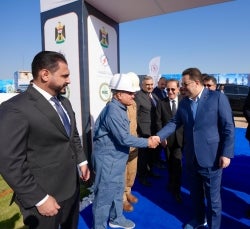 Iraq unveils 20-year plan to add 57GW of power capacity
Iraq unveils 20-year plan to add 57GW of power capacity21 November 2025
-
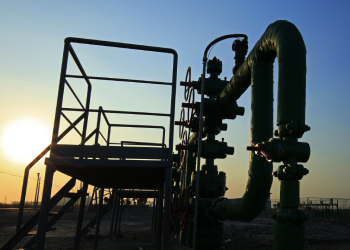 Kuwait upstream project to be completed in 2027
Kuwait upstream project to be completed in 202721 November 2025
-
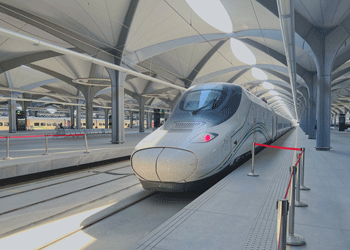 Regional rail construction surges ahead
Regional rail construction surges ahead21 November 2025
-
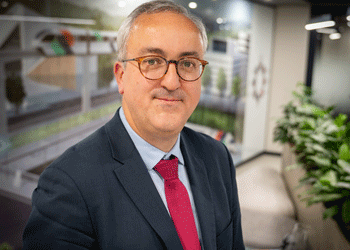 Middle East becomes a hub as rail networks mature
Middle East becomes a hub as rail networks mature21 November 2025
All of this is only 1% of what MEED.com has to offer
Subscribe now and unlock all the 153,671 articles on MEED.com
- All the latest news, data, and market intelligence across MENA at your fingerprints
- First-hand updates and inside information on projects, clients and competitors that matter to you
- 20 years' archive of information, data, and news for you to access at your convenience
- Strategize to succeed and minimise risks with timely analysis of current and future market trends
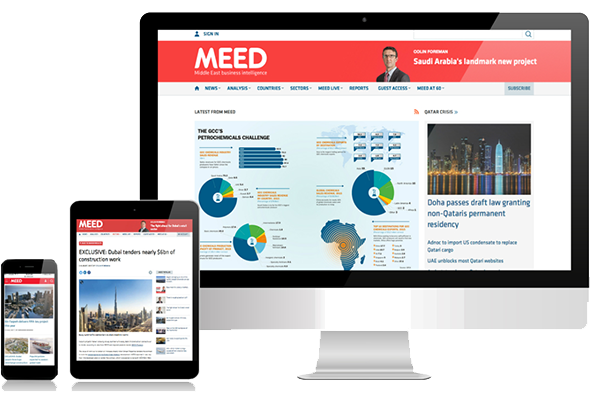
Related Articles
-
 Egypt places fuel order for El-Dabaa nuclear plant
Egypt places fuel order for El-Dabaa nuclear plant21 November 2025
Egypt’s government has signed a nuclear fuel purchase order for the first unit of the El-Dabaa nuclear power plant, which is expected to be operational in 2026.
The fuel order was signed with Russia’s State Atomic Energy Corporation (Rosatom).
The signing ceremony was attended by Egypt’s Prime Minister Mostafa Madbouli. It included senior officials from Egypt’s Ministry of Electricity & Renewable Energy and the Nuclear Power Plants Authority (NPPA).
The agreement coincided with the installation of the VVER-1200 Generation III+ reactor pressure vessel for the project’s first unit.
The El-Dabaa nuclear power plant will have four units, each capable of generating 1,200MW of electricity. The VVER-1200 Generation III+ reactor model has been selected for all four units.
Egypt and Russia signed the initial inter-governmental agreement for the North African state’s first nuclear facility in November 2015.
Rosatom, the project’s main contractor, announced that it started the production of electrical components in Saint Petersburg for a reactor vessel for the plant in June 2022.
The two countries also agreed on broader cooperation covering nuclear technology, medical radioisotopes, technical applications such as 3D printing, and communications.
El-Dabaa project status
In September 2023, the Egyptian Nuclear & Radiological Regulation Authority (ENRRA) granted a construction permit for the plant’s fourth reactor. ENRRA granted the construction permit for unit three in March that year and units one and two in June 2022 and October 2022, respectively.
In November 2022, South Korea’s Doosan Enerbility signed a contract valued at $1.2bn with state-owned South Korea Hydro & Nuclear Power (KHNP), a subsidiary of Korea Electric Power Corporation (Kepco), for the project.
Rosatom subsidiary ASE earlier appointed KHNP as the single supplier for constructing the turbine islands.
The simultaneous installation of the reactor pressure vessel and fuel order indicates that Unit 1 has transitioned from civil construction into the core mechanical and systems-installation phase.
The latest advancements align with Egypt’s annual Nuclear Energy Day, observed on 19 November to mark the 2015 agreement that initiated the El-Dabaa project.
https://image.digitalinsightresearch.in/uploads/NewsArticle/15132504/main37223922.jpg -
 Iraq unveils 20-year plan to add 57GW of power capacity
Iraq unveils 20-year plan to add 57GW of power capacity21 November 2025
Register for MEED’s 14-day trial access
Iraq has unveiled a 20-year plan to add 57GW of new power capacity in partnership with Germany’s Siemens Energy and US-based GE Vernova.
The programme aims to expand the electricity sector through new gas-fired plants, renewable energy schemes and long-term maintenance plans for existing plants.
Prime Minister Mohammed Shia Al-Sudani announced the plan on 19 November as he launched a project to build the 1,400MW Al-Youssifiyah thermal power plant under a build-own-operate (BOO) model.
Located about 30 kilometres from Baghdad, there have been previous attempts to restore the Al-Youssifiyah plant, which has been stalled since it was destroyed during the Gulf War.
In 2015, the project was cancelled amid civil unrest in the region.
No official timeline was given for the latest “implementation phase” of the project.
In a statement, however, the prime minister said the country will move towards an alternative financial model for electricity investments.
“We have adopted an investment financial model that addresses the injustices of previous phase contracts to provide an attractive environment for investment,” he said.
“We have worked to reduce the tariff rate and provide up to a 43% [reduction] from previous contracts while preserving public funds,” he added.
MEED understands that these savings refer to reduced generation costs under a model supported by long-term power purchase agreements (PPAs).
Al-Sudani has also directed the ministry to calculate the actual cost of producing electricity and recover it through improved billing and collection.
Iraq’s government has also set a target of adding more than 7GW of solar capacity by 2030 to reduce reliance on oil- and gas-fired generation. The country continues to face chronic electricity shortages, especially during the summer months, as it aims to meet 24-hour demand.
In August, the government approved five major power generation projects, with a combined capacity exceeding 10,000MW.
The projects include three major independent power producer (IPP) combined-cycle plants at Al-Faw, Abu Ghraib and Kirkuk, totalling 7,500MW.
The Iraqi cabinet also approved the development of two thermal power plants, one in Najaf and the other in Youssifiyah, with output capacities of 1,500MW and 1,800MW, respectively.
Furthermore, in September, Iraq started power generation at its first utility-scale solar plant.
The first phase of the 300MW Karbala solar power plant has started generating 22MW, with plans to increase to the full capacity of 300MW by the end of the year.
https://image.digitalinsightresearch.in/uploads/NewsArticle/15131975/main2817.jpg -
 Kuwait upstream project to be completed in 2027
Kuwait upstream project to be completed in 202721 November 2025

State-owned upstream operator Kuwait Oil Company (KOC) is expecting its project to install depletion compression systems and sulphur recovery units (SRUs) to be completed in the middle of 2027, according to industry sources.
KOC signed a contract with Kuwait-based engineering contractor Spetco earlier this year, and construction work is currently ongoing.
In November last year, Spetco submitted a bid of KD126.5m ($412m), beating bids from companies based in China, Saudi Arabia and India.
The project involves installing new units at the facilities known as Early Production Facility 50 (EPF-50) and Jurassic Production Facility 3 (JPF-3).
Tender documents were originally made available on 17 September 2023, with a bid deadline of 17 December that year.
Due to scope changes, the deadline was extended several times before bids were ultimately submitted ahead of a 15 October 2024 deadline.
Scope changes
In August last year, MEED reported that the estimated budget for the project had been increased from about $380m to approximately $460m due to scope changes.
The project uses the build-own-operate-transfer contract model.
EPF-50 and JPF-3 are sour hydrocarbons processing and handling facilities located in North Kuwait, designed to handle high-pressure (HP) sour hydrocarbons from several Jurassic wells in North Kuwait fields.
The project was launched to sustain production from the facilities by installing compression systems and SRUs.
Boosting compression
The contract’s original scope of work was divided into two parts, according to the tender documents that were released in September 2023.
The first part focused on installing a new medium-pressure (MP) compression system and SRU at EPF-50.
The second part focused on installing a new MP compression system and SRU at JPF-3.
The EPF-50 and JPF-3 facilities receive sour wet hydrocarbons reservoir fluids through flowline gathering networks and trunk lines.
Crude, gas and water are separated in a separation section that is currently receiving well fluid at 1,100 pounds a square inch gauge (psig), and the crude is stabilised for export after desalting.
The separation section consists of HP, MP and low-pressure (LP) separators in series. MP and LP gases are compressed to HP and combined with gas from HP separators.
The gas is then treated in gas sweetening and dehydration units before being exported via pipeline.
As the well fluid pressure depletes to MP, the combined feed from the inlet production headers and test header will be routed through a crude pre-heater to the new MP separator, which operates at about 425-450 psig.
The new compressors will compress the gas from MP to HP.
The EPF-50 facility can currently process 200 million standard cubic feet a day (scf/d) of gas, 50,000 barrels a day (b/d) of oil and 130 tonnes a day (t/d) of sulphur.
Originally, the upgrade project was expected to increase the volume of sulphur it can process to 270-310 t/d, but after the proposed changes to the scope, the capacity is now likely to be larger.
The JPF-3 facility can currently process 150 million scf/d of gas, 50,000 b/d of oil and 200 t/d of sulphur.
Originally, the planned upgrade was expected to increase the volume of gas that the facility can process to 240 million scf/d and the volume of sulphur to 440 t/d.
Due to the scope changes, the capacity of JPF-3 will now be increased by more than the volumes outlined in the original tender documents.
It is currently unclear by how much the capacities of EPF-50 and JPF-3 will increase under the new project scope.
https://image.digitalinsightresearch.in/uploads/NewsArticle/15129453/main.png -
 Regional rail construction surges ahead
Regional rail construction surges ahead21 November 2025

> This package also includes: Middle East becomes a hub as rail networks mature
The GCC is at the centre of global rail construction activity after a decade of stop-start activity. Progress is being made on several large-scale rail schemes, providing renewed opportunities for international contractors to re-enter the market.
From the Qiddiya high-speed rail in Saudi Arabia to the planned expansion of Dubai’s metro network and the long-awaited revival of the GCC railway, a new wave of projects is shaping the region’s economic future.
 Well-timed resurgence
Well-timed resurgenceAccording to data from regional projects tracker MEED Projects, the region boasts a pipeline of over $140bn-worth of railway schemes. Several factors are driving the renewed focus on major infrastructure.
Firstly, the region’s post-pandemic recovery has been underpinned by robust fiscal performance. Higher oil prices since 2022 have strengthened government balance sheets, enabling public investment in capital projects. Unlike in previous cycles, however, the current wave of spending is guided by a clearer vision rooted in diversification and long-term national development strategies.
Saudi Arabia’s Vision 2030, the UAE’s Centennial Plan 2071 and Oman’s Vision 2040 all emphasise connectivity, mobility and urban liveability as essential components of sustainable growth. Governments are therefore prioritising infrastructure that forms the backbone for tourism, logistics and housing development.
Secondly, project delivery capabilities have matured across the GCC. Local developers, contractors and authorities have gained experience delivering large and complex schemes such as the Dubai and Riyadh metros and Doha’s Fifa World Cup infrastructure. This has built confidence and the capacity to handle more ambitious undertakings.
Thirdly, global construction markets are shifting. With slowing growth in some developed economies, the GCC offers a stable, well-capitalised and politically supportive environment for investment.
In addition, international contractors, consultants and suppliers are facing shrinking margins elsewhere and are therefore refocusing on the Gulf region’s more promising project pipelines.
Strong prospects
Saudi Arabia has a pipeline of about $60bn-worth of rail projects. The long-discussed Saudi Land Bridge, connecting the Red Sea to the Gulf through Riyadh, is being prepared for procurement. Once complete, it will be a 1,300-kilometre (km) corridor from Jeddah to Dammam, transforming freight logistics and positioning Saudi Arabia as a regional trade hub.
The kingdom’s planned Qiddiya high-speed rail, meanwhile, will link King Salman International airport with Qiddiya entertainment city. It is part of Riyadh’s broader mobility masterplan and reflects the government’s intention to integrate developments with efficient public transport.
Riyadh also continues to expand its metro system, with Line 7 currently under tendering. This addition will extend the network’s reach to growing urban districts, further embedding mass transit into the daily life of the city.

Dubai is moving forward with the proposed Metro Gold Line
In the UAE, the momentum is just as strong. The ongoing Etihad Rail project is entering a new phase with the anticipated rollout of passenger services, connecting Abu Dhabi, Dubai and eventually the northern emirates. Freight operations are already under way, providing a backbone for industrial connectivity and cross-border trade. Plans for an Abu Dhabi–Dubai high-speed link are also progressing as bid evaluation continues for the main construction works.
Dubai is also going ahead with the proposed Metro Gold Line, which is designed to serve new growth corridors and improve connectivity to emerging districts.
Meanwhile, regional integration is back on the agenda with the GCC Railway, a long-delayed project that is finally gaining traction. Once realised, the network will connect Kuwait to Oman via Saudi Arabia, Bahrain, Qatar and the UAE, and governments are now actively coordinating to align standards, timelines and funding mechanisms.
The GCC offers a stable, well-capitalised and politically supportive environment for investment
Evolving delivery models
While public funding remains central to these initiatives, the GCC’s infrastructure landscape is also seeing a gradual shift towards new delivery and financing models.
Public-private partnerships (PPPs) are gaining traction, especially in Saudi Arabia. The proposed Qiddiya high-speed rail project is planned as a PPP, while several components of Hafeet Rail are being delivered through joint ventures providing financing arrangements.
This evolution comes with challenges, however. These frameworks must balance investor confidence with
public value, creating a need for clear risk allocation and transparent governance.The scale and ambition of the ongoing projects have not gone unnoticed internationally. Leading construction, engineering, and technology firms are either expanding or returning to the region after years of reduced activity.
Global rail specialists are competing for lucrative contracts in the region, while international consultancies are increasingly embedded in master planning and programme management roles.
The resurgence in project activity within the regional rail sector means firms will have many prospects to explore.
“The regional market has not been this exciting in a long, long time,” a senior executive from a major international rail firm told MEED.
“The market is shaping up for a golden era in rail and we will make sure that we give it our full attention.”
Another executive added: “This is primarily because of the resources available to governments now compared to in previous years, but more importantly [it is due to] the intent and will to make the projects happen.”
The GCC’s clear project pipeline and decisive execution are also a draw. Several rail projects in the region, such as Dubai Metro and Etihad Rail, have progressed from concept to implementation in relatively short timeframes.
Moreover, sustainability and innovation are becoming central to the GCC’s value proposition. Digital engineering, modular construction and low-carbon materials are being adopted more widely.
Developers are under pressure to meet environmental standards and align with global best practices. Commitment to these concerns, particularly through the UAE and Saudi Arabia’s net-zero goals, further enhances the region’s attractiveness to global investors.
Bringing together transport, tourism, logistics and sustainability is creating a practical approach to modern urban development
Challenges ahead
Despite the optimism, challenges remain. Cost pressures, supply chain disruptions and competition for skilled labour could slow progress or inflate project budgets.
The rapid pace of project launches also risks overstretching local capacity. Maintaining quality, timelines and financial discipline will require strong governance and careful coordination between various government agencies.
Long-term success depends on integrating infrastructure investment with broader social and economic goals. Transport systems must connect to affordable housing, job clusters and educational hubs, otherwise benefits remain limited.
That said, the GCC has shown remarkable adaptability. The lessons learned from previous cycles, especially the importance of phasing, master planning and stakeholder alignment, are helping to shape current strategies. Authorities are more selective, prioritising projects that yield clear economic multipliers and align with national visions.
The current wave of infrastructure expansion looks set to position the GCC region as a global rail construction hotspot. The projects will also define the physical and economic landscape of the region for decades to come.
By connecting cities, ports, and industries, these projects are reshaping the region’s economy. Bringing together transport, tourism, logistics and sustainability is creating a practical approach to modern urban development.
If the previous era of regional construction was defined by skyscrapers and luxury resorts, the coming decade will be defined by connectivity and integration. The GCC’s major projects today are not about scale alone, but also about building more connected economies that can sustain growth.
The renewed momentum also presents an opportunity for regional governments to amplify their national ambitions by building more diversified economies, reducing carbon emissions and enhancing liveability.
Main image: Haramain high-speed train in Jeddah, Saudi Arabia
 Middle East becomes a hub as rail networks mature: MEED interviews Martin Vaujour, Alstom’s Africa, Middle East and Central Asia region presidenthttps://image.digitalinsightresearch.in/uploads/NewsArticle/15132273/main.gif
Middle East becomes a hub as rail networks mature: MEED interviews Martin Vaujour, Alstom’s Africa, Middle East and Central Asia region presidenthttps://image.digitalinsightresearch.in/uploads/NewsArticle/15132273/main.gif -
 Middle East becomes a hub as rail networks mature
Middle East becomes a hub as rail networks mature21 November 2025

The resurgence in investment in metro and intercity lines means the region is no longer an emerging market for the global rail industry. It is now an established hub with an expanding network of projects and, increasingly, the need for ongoing servicing, upgrades and new technologies.
 “We are reaching a point where it is not just about building new lines. Customers are now understanding that it is not enough to just buy new trains – they also need long-term partnerships to service and maintain them efficiently,” says Martin Vaujour, Alstom’s Africa, Middle East and Central Asia region president.
“We are reaching a point where it is not just about building new lines. Customers are now understanding that it is not enough to just buy new trains – they also need long-term partnerships to service and maintain them efficiently,” says Martin Vaujour, Alstom’s Africa, Middle East and Central Asia region president.Alstom, which has supplied rolling stock and systems for major schemes in the region such as the Riyadh Metro, is now seeing growing demand for both new-build contracts and service agreements. “There are still lots of new investments,” he says, “but also growing activity in signalling projects, service projects and spare parts – areas that used to be small but are now taking off. That is a [source] of satisfaction for me, because those businesses are less risky, have better margins and create long-term relationships with customers.”
The change is an important development as the region becomes a mature market with diverse opportunities for the rail industry. “There was a time when countries would just buy materials with export credit,” says Vaujour. “Now, they are supporting local capacity to service and maintain trains. The mindset is evolving, and that is a very positive sign.”
Saudi expansion
Buoyed by the opening of Riyadh Metro at the end of 2024, Saudi Arabia remains an important market. “They are happy with the success [of Riyadh Metro],” says Vaujour. “There is extension work on the existing lines, new rolling stock being discussed and a potential Line 7 project. The network is expanding, and that is a great success story.”
The next wave of growth in Saudi Arabia includes the planned Qiddiya Express high-speed line, which has recently attracted expressions of interest.
“That project has been on our radar for some time,” says Vaujour. “It is under the umbrella of the Royal Commission for Riyadh City, which is very well organised and structured. That gives the project strength and credibility.”
The scheme is being developed as a public-private partnership, a model that Vaujour says fits Saudi Arabia’s stable economic environment. “Public-private partnerships (PPPs) take longer to put together because they are more complex to structure, but in countries like Saudi Arabia – stable and with the capacity to raise debt – why not?” he says.
“We are fine with PPPs. We have experience from France, the UK and Spain.”
While Alstom does not invest directly, it plays a key role in structuring deals. “We are facilitators and advisers,” says Vaujour.
“Our job is to accompany the customer, to adjust and iterate with them, and to help find the best solution. PPP is one of the tools in the box – not the simplest one, but one that works.”
The challenge in the market today is not a lack of opportunity, but deciding where to focus.
“Our main problem is not the market; it is how to be selective,” he says. “We have more than enough opportunities to ensure a nice trajectory of growth. The difficulty is to pick our battles and fight for the right ones.”
The challenge in the market today is not a lack of opportunity, but deciding where to focus
Shifting focus
In Africa and Central Asia, Alstom has long-term locomotive and commuter train partnerships that offer years of visibility. In the Gulf, by contrast, the model remains dominated by engineering, procurement and construction-style projects.
“It is more big projects, where civil contractors team up with us to deliver metros or airport people movers,” says Vaujour.
As regional urban transport networks become established, attention is turning to intercity and high-speed rail. “In the Gulf, the Abu Dhabi-Dubai high-speed project is probably the most advanced, while Qiddiya Express and upgrades to the Haramain line in Saudi Arabia could also accelerate momentum.”
Interest in high-speed connections between Riyadh, Doha and Kuwait is also growing, although such schemes will depend on electrification. “High-speed rail comes with electrification,” Vaujour notes. “And that means significant investment.”
In addition to new infrastructure, the rail sector is being reshaped by technology. Alstom is investing in clean traction systems, such as hydrogen and battery-powered trains, as well as in autonomous operations.
“Hydrogen and battery traction are progressing, but they are still in an early stage,” says Vaujour. “Diesel will continue to dominate freight for some time, because there is no clean technology yet that can deliver that level of power. But for passenger services, we are starting to see progress.”
Driverless trains are another major growth area. “Customers everywhere are interested, partly because it is increasingly hard to find drivers, and also because software drives more efficiently than humans. It is more energy-efficient and reduces wear and tear,” says Vaujour.
As the Middle East’s networks expand, upgrading existing infrastructure is becoming as important as building new lines. Signalling systems are central to this evolution. “You cannot just create new lines every year – it is too expensive,” says Vaujour. “Signalling allows you to double train frequency. It is what makes networks more efficient.”
The evolution reflects a wider transformation of the region’s rail sector. “The Middle East has become an established rail hub,” says Vaujour. “It is no longer just about building – it is about operating, maintaining and evolving.”
https://image.digitalinsightresearch.in/uploads/NewsArticle/15131845/main.gif



